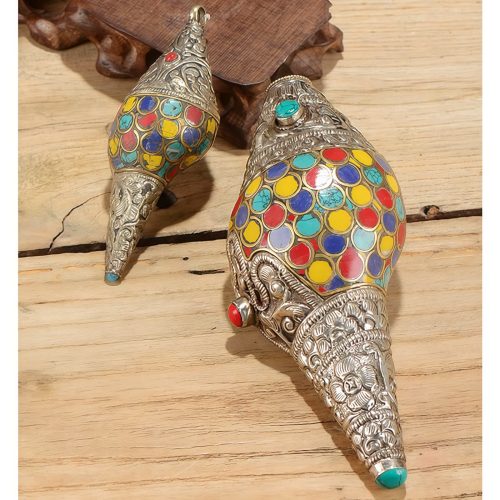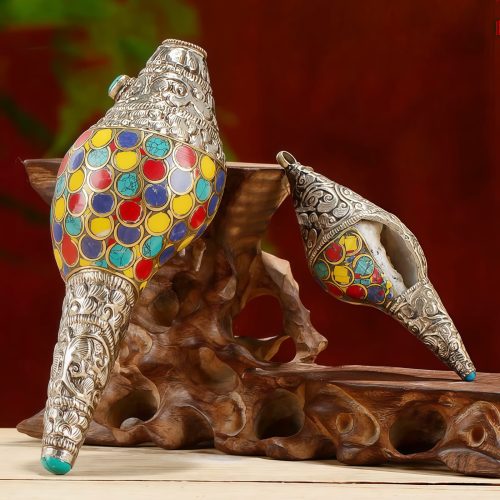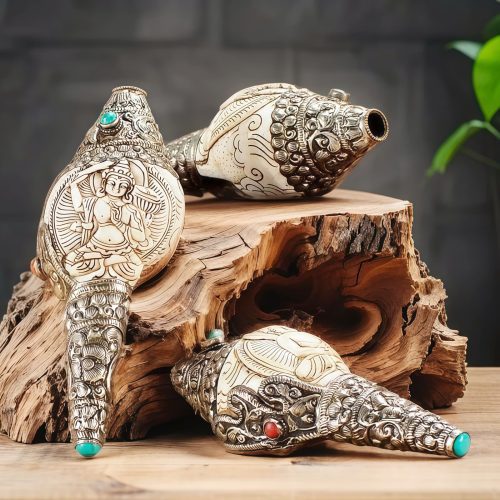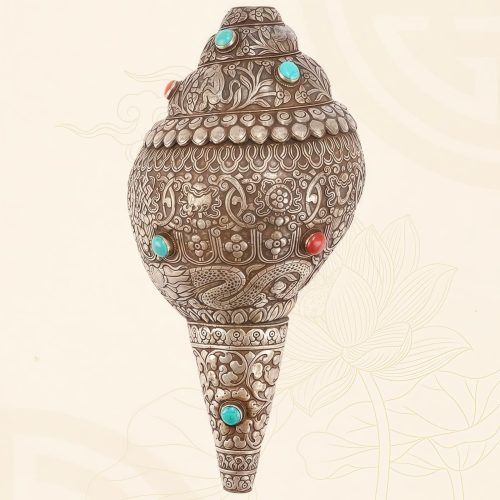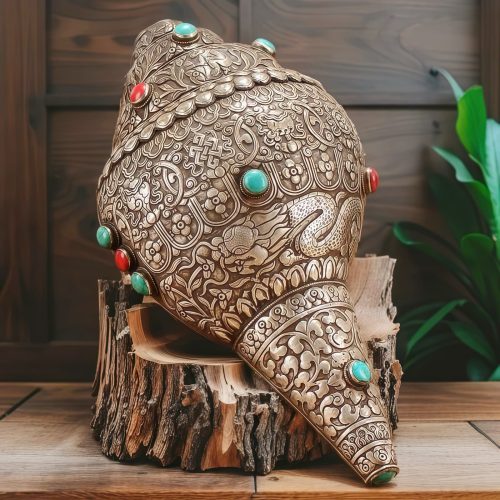Tibetan conch shells, known as Shankhas or Dung-Dkar, are revered ceremonial instruments and sacred objects within Tibetan Buddhism. These unique natural shells, often intricately adorned, hold deep spiritual significance, symbolizing the spread of dharma and the call to spiritual awakening.
What Exactly Are Tibetan Conch Shells (Shankhas)?
Tibetan conch shells are typically the shells of large predatory sea snails, primarily sourced from the Indian Ocean. In Tibetan Buddhist tradition, they are known as Dung-Dkar, which translates to "white conch." These shells are distinguished by their natural spiraling form, with the most auspicious being those that turn to the right (dextral). They function both as powerful ritual instruments, producing deep, resonant tones, and as highly valued decorative pieces.
- Natural Origin: Each conch shell is a natural formation, making every piece unique in its exact shape and size.
- Ceremonial Significance: Used in monasteries and homes to mark important rituals, call practitioners to prayer, and clear negative energies.
- Artistic Embellishment: Many shells are further enhanced with hand-carved designs, precious metals like silver or copper, and inlays of gemstones such as turquoise or coral, often depicting Buddhist symbols or mantras.
Understanding the Profound Symbolism of Tibetan Conch Shells
The Tibetan conch shell is one of the Eight Auspicious Symbols (Ashtamangala) in Buddhism, embodying a rich tapestry of spiritual meaning. Its sound is believed to carry the teachings of the Buddha across the world, awakening sentient beings from the slumber of ignorance.
- Voice of Dharma: Symbolizes the fearless proclamation of the Buddha's teachings, reaching far and wide.
- Victory and Awakening: Represents victory over suffering and ignorance, and the awakening call to enlightenment.
- Auspiciousness: Believed to bring good fortune, prosperity, and blessings to the space it inhabits.
- Purity: The natural white color of the shell is often associated with purity and the cleansing of negative karma.
These shells are often seen alongside other significant elements of Tibetan jewelry and sacred art, such as Dzi beads, reinforcing their spiritual importance.
How to Choose and Care For Your Tibetan Conch Shell
Selecting a Tibetan conch shell involves considering its purpose and aesthetic appeal, while proper care ensures its longevity and maintains its sacred energy.
When choosing, consider whether the shell is primarily for ceremonial use, requiring a clear, resonant tone, or for decorative purposes, where intricate carvings and embellishments might be prioritized. Look for shells with a strong, natural form and well-executed artistry. The presence of auspicious symbols like the Double Dorje or Om Mani Padme Hum can add further personal significance.
- Handling: Always hold your conch shell with respect. Avoid dropping it, as natural shells can be fragile.
- Cleaning: For decorative shells, gently wipe with a soft, dry cloth. If metal embellishments are present, use appropriate metal cleaners sparingly and carefully, avoiding contact with the shell itself.
- Storage: Store your shell in a clean, sacred space, away from direct sunlight or extreme temperature changes, which can cause cracking or discoloration.
Understanding the materials and their care is similar to how one might approach Healing crystals or other spiritual artifacts.
Each Tibetan conch shell is more than an object; it is a profound connection to ancient traditions and a source of auspicious energy. Explore our collection to find a unique piece that resonates with your spiritual journey and enhances your sacred space.







